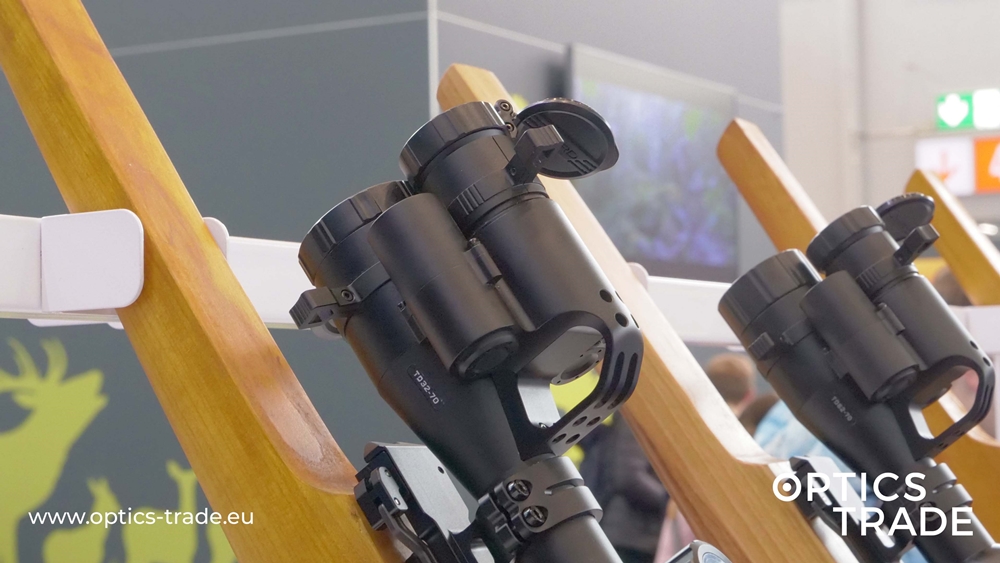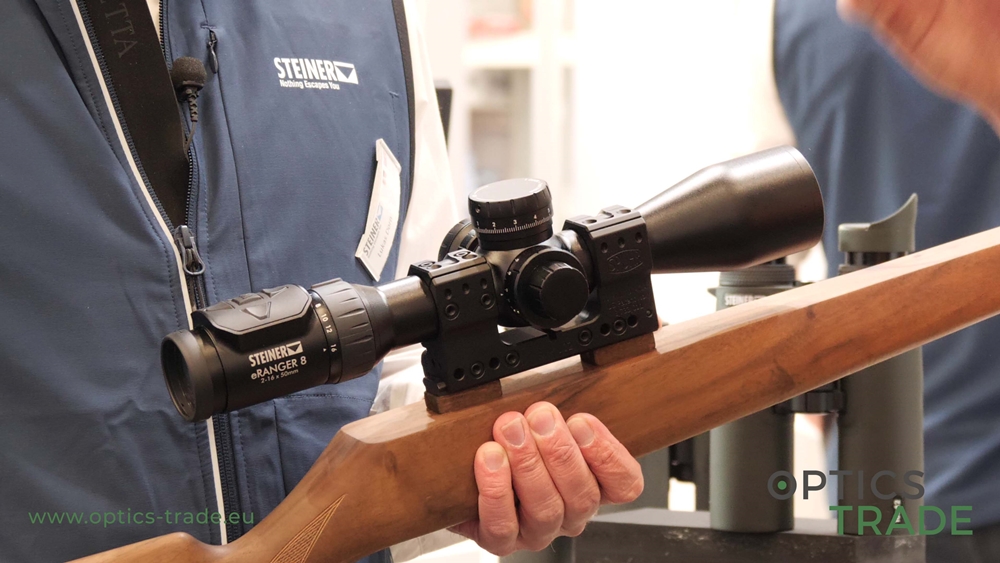Hello and welcome to another episode of Optics Trade Debates. We continue on our way through explaining the basic attributes of all types of night vision optical devices that are available on our webpage. This particular episode will focus on digital night vision binoculars.
First, let’s establish the difference between analog and digital NV devices on the whole. Analog NV devices are based around light-amplifying tubes or photocathodes inside. With digital models, there is a sensor on one side, plenty of complicated software in the middle and a display at the other end. They basically operate as a camera but made to function in low light situations.
Night vision binoculars are very similar to all other digital devices in this field of optics. The only difference is that they have either two displays or one display and a system of prisms so that the user is able to see displayed image with both eyes – and not only with one as in the case of NV monoculars and clip-on devices.
As humans, we are used to viewing the outside world with both eyes. That is the natural way. When we are made to observe only with one, the eyes tire out much more easily. It can even be a little bit disorienting for some users since one pupil adapts to the light of the display while the other remains dilated due to the low light natural environment. That’s why monoculars and NV clip-ons cannot offer the same ease of use as night vision binoculars can.
What is more, users’ subjective feeling of image quality is better with NV binoculars than when using a monocular device of the exact same optical performance. For example, let’s say that the user is looking at a screen with 640×480 resolution. When looking at the display through prisms using both eyes (or when there are 2 displays, one for each eye), the user will feel like the image has a better resolution than when looking at a screen of the same pixel count but only having one eye to rely on.
Now, let’s focus on the differences between classic, mechanical daytime binoculars and digital NV ones. There are many. The user looks at a screen so there are far fewer glass components used in the structure of digital optical devices. The displayed image is digital, made out of pixels and so the resolution is much lower and cannot match the real image (that can be only seen in all its detail when looking through glass. a.i. using mechanical binoculars). But just like their daytime antecedents, digital night vision binoculars can be mounted on bipods.
The advantage of digital NV binoculars is that the user is able to take snapshots and film videos. They can even feature a built-in GPS or Wifi connectivity. As far as physical attributes are concerned, digital NV binoculars are much lighter than analog versions.
The interesting thing is that most of these devices look just like classic daytime binoculars, utilizing the typical tubular shape with 2 objective lens. But in reality, there is only one objective lens with a sensor, while the other one is actually an IR illuminator. It’s an infrared flashlight, emitting IR beams while the sensor inside the other lens generates the image.
Since the shape of digital NV binoculars is no different from classic devices, the settings can be adjusted in a similar fashion. For example, some NV models allow the user to adjust the interpupillary distance. While there is no central focusing knob, this setting can be modified by rotating the wheel installed around the objective lens.
Most digital night vision binoculars have a full set of buttons on top of the device and rely heavily on the user interface in form of a menu. That’s where the more complicated settings (e.g. device brightness, intensity levels …) can be accessed, as well as advanced features such as GPS navigation system and video recording.
These smart devices are the future of night vision and will surely eventually replace their analog counterparts. They are the best choice for tech-savvy customers who get plenty of use out of their smartphones and similar multifunctional devices.
Digital NV binoculars can also be used during the day, just like classic binoculars. Since the image-intensifying photocathode of analog NV binoculars is here replaced with software, all digital models can be safely exposed to bright sunlight. They function as dual devices.
That’s not all. The price point is yet another advantage of digital night vision devices over analog variants. Most are priced from 500 to 1,000 euros. Digital NV binoculars are much more affordable and this trend will only continue in the next few years. In fact, 20 years from now, analog NV optics will most likely be phased out of production entirely.
Digital NV binoculars are also more budget-friendly than classic binoculars. However, if the user has no interest in nighttime observations, purchasing digital binoculars over mechanical ones is pointless. Compared to classic mechanical binoculars, the image quality of digital night vision devices is just not there.
IR illuminators of digital night vision binoculars use a wavelength that is high enough to be completely invisible to animals (as in, 915 or 940 nanometers). This is a definite benefit for those who are primarily interested in hunting applications of NV devices. Most digital NV binoculars can be equipped with one additional IR illuminator.
There is one clear disadvantage of digital NV binoculars, though. The resolution capabilities of digital devices are simply no match for analog models. Magnification powers are another shortcoming of these devices. The higher the magnification power, the lower the quality of the displayed image. The lens diameter is not that important anymore because it all depends on the sensor.
Unlike classic binoculars that need no power source to perform, all NV binoculars use batteries and they need to be frequently replaced since they burn out fast. The battery drain is a problem and the user is advised to pack spare batteries at all times.
At the moment, there aren’t that many products to choose from. This is the case with practically all NV optics. So far, a limited number of manufacturers like ATN, Yukon, Nightspotter and Jahnke put their name on the map. But the market is expanding and soon there will be a flood of digital NV binoculars available for civilian use.
This should more than cover everything. Still, if you have any questions left don’t hesitate to email us or leave a comment down below. Please like and share this video if you found it useful. We would greatly appreciate it. For more videos like this one, subscribe to our Youtube channel and we’ll see you next time. Bye!
Products mentioned:




